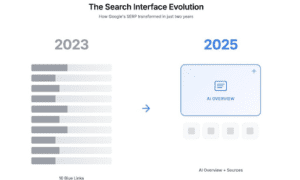A finance leader with over 15 years of experience shares how she helped companies in oil, telecom, and gaming use numbers not just to report the past, but to shape what comes next
In 2025, many finance teams continue to rely on outdated legacy methods, despite the growing availability of advanced digital tools. According to the latest AFP FP&A Benchmarking Survey, spreadsheets remain the dominant tool for planning and reporting, used by 96% and 93% of teams, respectively. Finance professionals report working with poor or hard-to-access data, which limits their ability to support timely and strategic decision-making. The issue isn’t a shortage of tools, but a lack of readiness to implement them effectively. Without the proper data infrastructure, integrated processes, and cultural support, digitalization remains underutilized, slowing decisions, reducing clarity, and limiting the organization’s ability to create value.
Anna Chekashova has worked on these challenges for over 15 years, across industries including audit, telecom, investment, gaming, and technology. She has led finance transformations that replaced disconnected workflows with integrated planning models, introduced a scalable CapEx framework, and built digital financial infrastructures that support both growth and strategic alignment, helping organizations make faster, data-driven decisions. In recognition of her work, she was named “Executive of the Year” in Financial Services at the 2025 Cases & Faces awards.
In this interview, we explore Anna’s approach to transforming FP&A into a strategic digital function that helps companies plan, decide, and execute with greater precision in an increasingly agile environment.
Anna, thank you for joining us. Considering the tendency, why do you think so many companies still struggle to modernize, and what’s the cost of staying behind?
There are several reasons companies still struggle to modernize. Often, they rely on legacy systems and spreadsheets that have been in place for years. These tools are familiar and seem to deliver results that feel “good enough.” However, beneath the surface, data is scattered, processes are disconnected, and there’s a lack of governance over how decisions are made.
Modernization can seem complex and disruptive, so hesitation is understandable. However, sticking with the old way of doing things comes at a cost: higher personnel costs to maintain outdated workflows, missed opportunities due to incomplete or outdated data, and a limited ability to analyze because teams are still stuck in manual work. I’ve seen businesses lose valuable opportunities simply because their data was fragmented or too slow to react to changes. Modernization isn’t just about adopting new tools; it’s about reengineering finance as a digital function, one that’s integrated, automated, and tightly connected to the business. When done right, finance teams move beyond reactive reporting and take on a strategic role, driving clarity, speed, and forward-looking decision-making.
You’ve led finance in everything from global audit firms to telecom and large investment groups, and now you’re in the U.S. tech. How did working across such different industries shape the way you approach building financial systems today?
Early in my career, I intentionally sought experience across various industries to broaden my perspective. In my view, strong financial leadership is transferable, and this is reflected in the market as well. For example, Alphabet’s CFO, Anat Ashkenazi, came from the pharmaceutical industry; ExxonMobil’s CFO, Kathy Mikells, transitioned from United Airlines and also held roles at Nalco, ADT, and Xerox.
While transitioning between industries does come with a learning curve, many of the core challenges remain similar. CFOs often specialize in areas like M&A, IPO preparation, restructuring, scaling operations, or navigating regulatory changes. These competencies are highly transferable and in some cases can be even more valuable than deep sector-specific knowledge.
Working across various industries has also shaped my approach to the digital side of finance. I’ve seen firsthand how different organizations and sectors vary in their digital maturity, whether it’s fragmented legacy systems, limited data infrastructure, or siloed planning environments. This variability taught me the importance of designing modular, scalable, and adaptable financial systems. Digital transformation has no one-size-fits-all solution. Technology must be tailored to fit the way each business operates.
Whether in telecom, investments, or gaming, I’ve focused on building finance systems that connect strategy, data, and decision-making, leveraging tools such as automated scenario logic and integrated performance dashboards. These experiences have strengthened my ability to align finance systems with each organization’s digital infrastructure, maturity level, and strategic objectives.
You introduced a unified investment governance model that enabled companies across diverse sectors to streamline decision-making for billions of dollars in investments. What made this approach innovative, and how did it deliver measurable results across such a wide portfolio?
The innovation was in introducing a comprehensive, cross-industry capital investments governance framework that supports the full investment lifecycle, from idea intake to post-implementation review. The framework uniquely includes three governance models: Standard Phase-Gated Governance, Front-End Loading, and Milestone-Based Phase-Gated Governance. Regardless of the model used, all projects must pass through clearly defined Gates, each tied to specific deliverables and decision criteria. This structure provides the flexibility necessary to apply a consistent governance approach across diverse industries, ranging from capital-intensive infrastructure to digital innovation, while adapting to the complexity, risk, and scale of each project.
It integrates financial modeling, ESG tracking, and digital automation into a unified system. Standardized capital expenditure (CapEx) categories enable consistent evaluation, prioritization, and comparison of projects. The integrated framework delivers reduced project costs, greater forecasting accuracy, and higher returns on invested capital. It leads to a 20% decrease in CapEx deviations, accelerates faster and more consistent decision-making, and allocates capital to high-value, strategically aligned initiatives. This framework redefines how organizations manage capital investments as a strategic process for making smarter, faster decisions that support long-term growth.
Today, with organizations investing heavily in data centers, cloud infrastructure, and AI capabilities, capital allocation decisions carry more weight and complexity than ever. A unified, digitally powered capital investments governance framework ensures that decisions are made with transparency, timeliness, and alignment to business priorities. This approach transforms capital planning from a siloed finance task into a connected, enterprise-wide decision system, fully aligned with the evolution of modern FP&A: integrated, adaptive, and strategically focused.
Very impressive results. Moreover, you introduced an all-new financial planning system that replaced fragmented, siloed processes in various business units, thereby contributing to the improvement of operational efficiency. What specific problems did it solve, and what outcomes did it produce?
I led the development and implementation of an integrated financial planning and reporting system that replaced fragmented, siloed, and manual processes across multiple organizations. Prior to this transformation, reporting relied heavily on disconnected systems and workflows, as well as spreadsheet-based models. This led to non-auditable outputs, limited data traceability, and a lack of alignment between financial metrics and strategic or operational objectives. Decision-making was frequently reactive, based on outdated or incomplete information.
To solve these issues, I designed and implemented an advanced unified reporting and planning system that connected financial, operational, and strategic data. It incorporated driver-based planning, rolling forecasts, automated scenario management, and was standardized through a unified chart of accounts and consistent KPIs. I also introduced dynamic dashboards that visualized performance by revenue stream, business unit, operational segments, expense category, and key business drivers.
The impact was transformative. Labor spent on manual reporting was reduced by over 40%, data accuracy improved through automation, and forecasting evolved from static, periodic exercises to a continuous, scenario-driven process. Most importantly, finance evolved from a back-office function into a driver-based strategic partner, supporting faster and better-informed decision-making, as well as long-term value creation.
While working with ARС Games Group, a leading American video games publisher, you introduced an advanced performance and forecasting system. What did that system allow the company to do that wasn’t possible before, and what was the result?
I implemented an advanced financial forecasting and performance analysis system that enabled game-level profitability analysis, scenario planning, and sensitivity modeling. The system unified budgeting, forecasting, and reporting through a centralized financial model built on standardized forms and dynamically linked data sources. This architecture ensured consistency, improved transparency, and made financial planning more accessible and actionable across departments.
By automating key workflows and leveraging advanced modeling and planning tools, we reduced manual effort by 40%, enabling faster cycles and more agile resource allocation. These enhancements provided deeper financial insight, supported real-time decision-making, and aligned planning more closely with product performance and development timelines. The integration and automation of financial workflows not only improved overall efficiency but also reduced operational costs.
In recognition of this work, I received the FP&A Excellence Award and the Exceptional Achievement Award for ERP implementation. These honors reflect the strategic impact of the finance transformation, which has built a scalable, efficient, and digitally enabled planning infrastructure that supports long-term growth.
For your major contributions, you are a member of esteemed associations like Forbes Finance Council, ACCA, and AICPA, which accept professionals only with a proven track record of achievements and impact. What does it mean to you to be part of these communities, and how has it influenced your approach to finance?
Being accepted into highly reputable organizations based on my professional achievements is an honor and holds significant value for me. These communities offer access to a network of top-tier finance leaders who consistently raise the bar for excellence in the field. They offer a platform to share best practices, exchange insights, and build meaningful professional relationships.
Membership in these organizations helps me stay ahead of the latest developments in finance, including regulatory changes, emerging technologies, and evolving best practices. It also provides a platform to contribute to the ongoing transformation of the field, especially in areas like digital FP&A, data-driven decision-making, and finance strategy.
Looking ahead, as finance continues to evolve alongside AI and automation, what new skills or mindsets do you think will matter most, and how can professionals begin to grow into those roles today?
Looking ahead, finance is entering a new chapter, one shaped by AI-driven forecasts, real-time scenario changes, and automated anomaly detection. Machine-learning models now update projections in real time, pulling from live operational data across the business. As this becomes the norm, the role of finance professionals is changing. Instead of manually gathering data and reports, they focus on verifying assumptions, interpreting AI-driven insights, ensuring alignment with business goals, and recommending informed decisions with context and judgment. As accountability stays with people, strong governance, transparency, and ethical oversight become essential. To thrive in this new environment, finance leaders will need sharp critical thinking, the ability to connect the dots and view the business through a strategic lens, collaborate across functions, and develop fluency in new technologies.





























